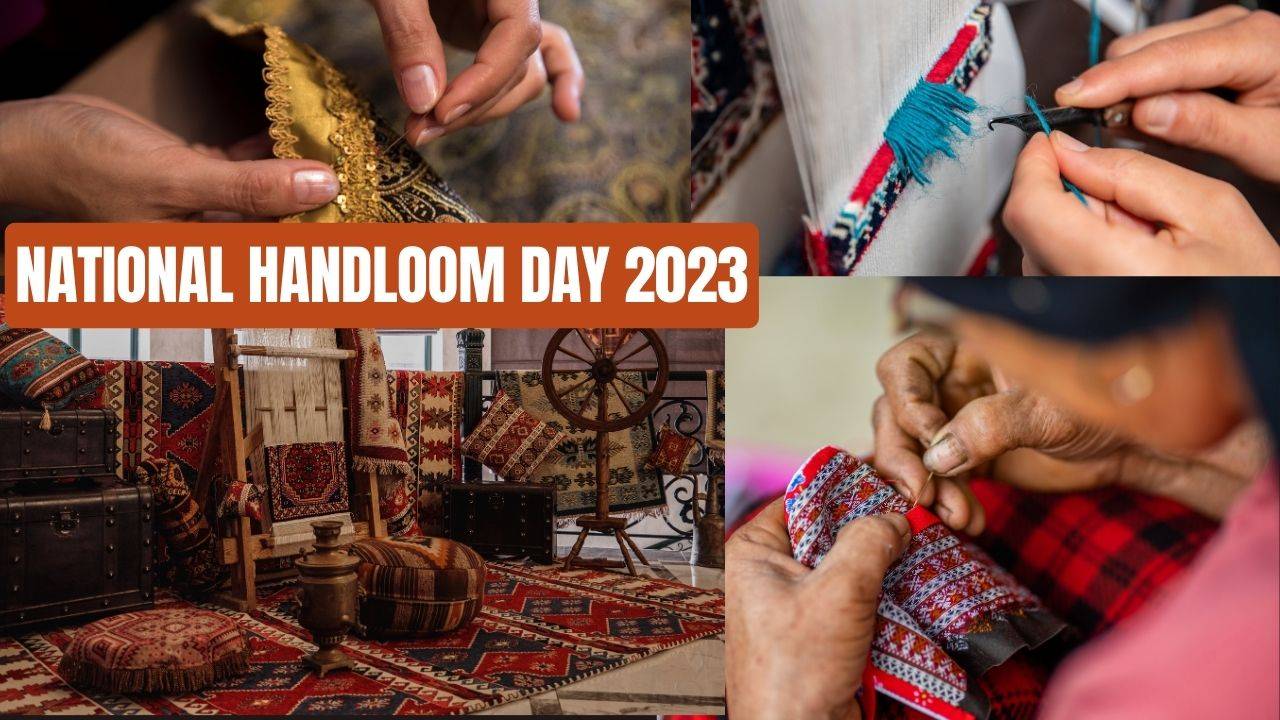
The handloom sector in India plays a crucial role in safeguarding the nation's diverse cultural heritage and contributing to its socio-economic progress.
Every year on August 7, National Handloom Day pays tribute to skilled handloom weavers across the country. This day also commemorates the commencement of the Swadeshi Movement, which was initiated on the same date in 1905.
National Handloom Day: Preserving India’s Rich Cultural Heritage
Handlooms have held a prominent role in India's struggle for independence. Over time, this industry emerged as a representation of the nation's abundant and diverse cultural legacy. Amidst the era of seeking freedom, Mahatma Gandhi inaugurated the Swadeshi Movement, advocating for the adoption of domestic goods. During this period, Khadi evolved into both a tool and an emblem of India's liberty, self-sufficiency, honour, and unwavering spirit.
National Handloom Day: Significance
This day holds significant importance in raising awareness about the handloom-weaving community's contributions and their role in our country's socio-economic development. The handloom industry embodies our cultural legacy and provides substantial income, particularly for women who comprise over 70% of its workforce.
Today, we acknowledge and emphasize the handloom weavers' impact on our nation's progress and renew our commitment to supporting their legacy while creating more opportunities for their empowerment.
Handloom: An Indian Legacy
Weaving stands as an intricate and artistic craft, transmitted across generations to uphold India's cultural legacy while also augmenting the nation's economy and livelihoods.
Ranging from Tamil Nadu's Kanjeevaram to Punjab's Phulkari, and from Madhya Pradesh's Chanderi to Odisha's Ikat, every state in India boasts its unique traditional handloom techniques that encapsulate the genuine spirit of the country. These handcrafted textiles serve as a portal, offering the world a glimpse into the profound cultural luxury, beauty, and artistic expression that define India.
India & Handloom Industry
Originating as one of India's earliest industries, the handloom sector contributes significantly, constituting 14% of industrial production, nearly 30% of total exports, and securing its position as the second-largest employer in the nation, surpassed only by agriculture. With over 4.3 million weavers and related workers, this industry plays a pivotal role in employment.
The eco-conscious handloom sector focuses on uplifting weavers by establishing direct market connections, introducing novel designs and product diversification, and enhancing production through skill enhancement, advanced technology, improved infrastructure, and accessible raw materials and capital.
The government has implemented strategic initiatives to support these objectives, including the National Handloom Development Programme (NHDP), Handloom Weavers Comprehensive Welfare Scheme (HWCWS), Comprehensive Handloom Cluster Development Scheme (CHCDS), and Yarn Supply Scheme (YSS).
In 2015, the 'India Handloom' brand was launched, representing top-tier handcrafted products. This initiative aimed to intensify the creation of premium handloom items featuring authentic traditional designs of impeccable quality while maintaining an environmentally friendly approach.
To fortify the authenticity of these products, a total of 72 handloom items and 6 product logos have been registered under India's Geographical Indications of Goods Act. For global outreach, the Handloom Export Promotion Council (HEPC) actively participates in international fairs alongside member handloom exporters, enabling the sale of these products in international markets.
Prime Minister @narendramodi to participate in #NationalHandloomDay celebration
— PIB India (@PIB_India) August 6, 2023
➡️ PM to launch the e-portal of “भारतीय वस्त्र एवं शिल्प कोष”, a Repository of Textiles & Crafts
🗓️ August 7, 2023
🕛12:00 PM
📍 Pragati Maidan, New Delhi pic.twitter.com/7c8Fbl5bXf










